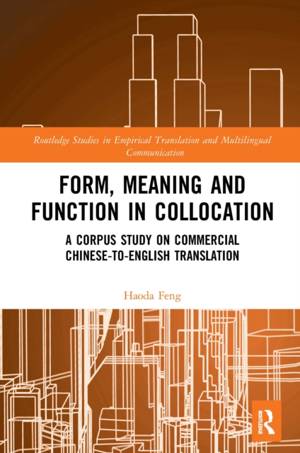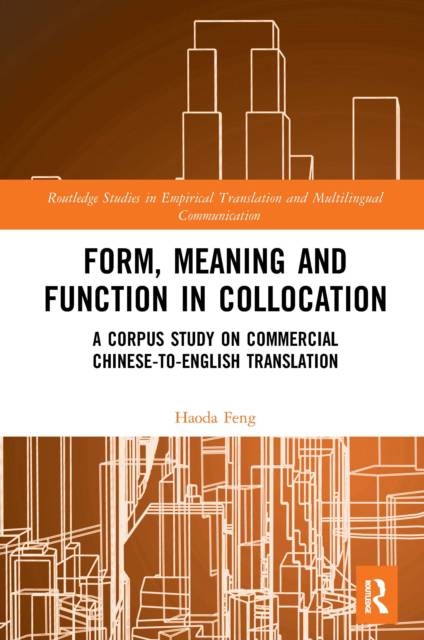
- Afhalen na 1 uur in een winkel met voorraad
- Gratis thuislevering in België vanaf € 30
- Ruim aanbod met 7 miljoen producten
- Afhalen na 1 uur in een winkel met voorraad
- Gratis thuislevering in België vanaf € 30
- Ruim aanbod met 7 miljoen producten
Form, Meaning and Function in Collocation
A Corpus Study on Commercial Chinese-to-English Translation
Haoda FengOmschrijving
The issue of differences between translational language and native-speaker language has become a topic of increasing interest in linguistics and Translation Studies (TS). One of the primary tasks in this research area is to employ a corpus approach and analyse collocations with authentic language data by comparing comparable corpora consisting of translated and native-speaker texts. Collocation in linguistics and TS refers to the relationship of co-occurrence between lexical items. The book shows that examining the use of collocations constitutes an integral part in assessing the naturalness of second language (L2) use, and therefore can be a valid measure to make a distinction between translational language and native-speaker language.
Nevertheless, the role of collocation has not been given enough attention or discussed systematically in TS and, to date, there are hardly any translation theorists who have clarified the mechanism of collocation in TS, by which translators acquire receptive and productive knowledge of collocations in their L2. In addition, previous research in this area is largely confined to Indo-European languages, resulting in a lack of empirical evidence involving Asian languages. This book therefore attempts to bridge the gap in the literature and constitute an integral part in the research area.
Specificaties
Betrokkenen
- Auteur(s):
- Uitgeverij:
Inhoud
- Aantal bladzijden:
- 198
- Taal:
- Engels
- Reeks:
Eigenschappen
- Productcode (EAN):
- 9781032237435
- Verschijningsdatum:
- 13/12/2021
- Uitvoering:
- Paperback
- Formaat:
- Trade paperback (VS)
- Afmetingen:
- 156 mm x 234 mm
- Gewicht:
- 285 g

Alleen bij Standaard Boekhandel
Beoordelingen
We publiceren alleen reviews die voldoen aan de voorwaarden voor reviews. Bekijk onze voorwaarden voor reviews.











